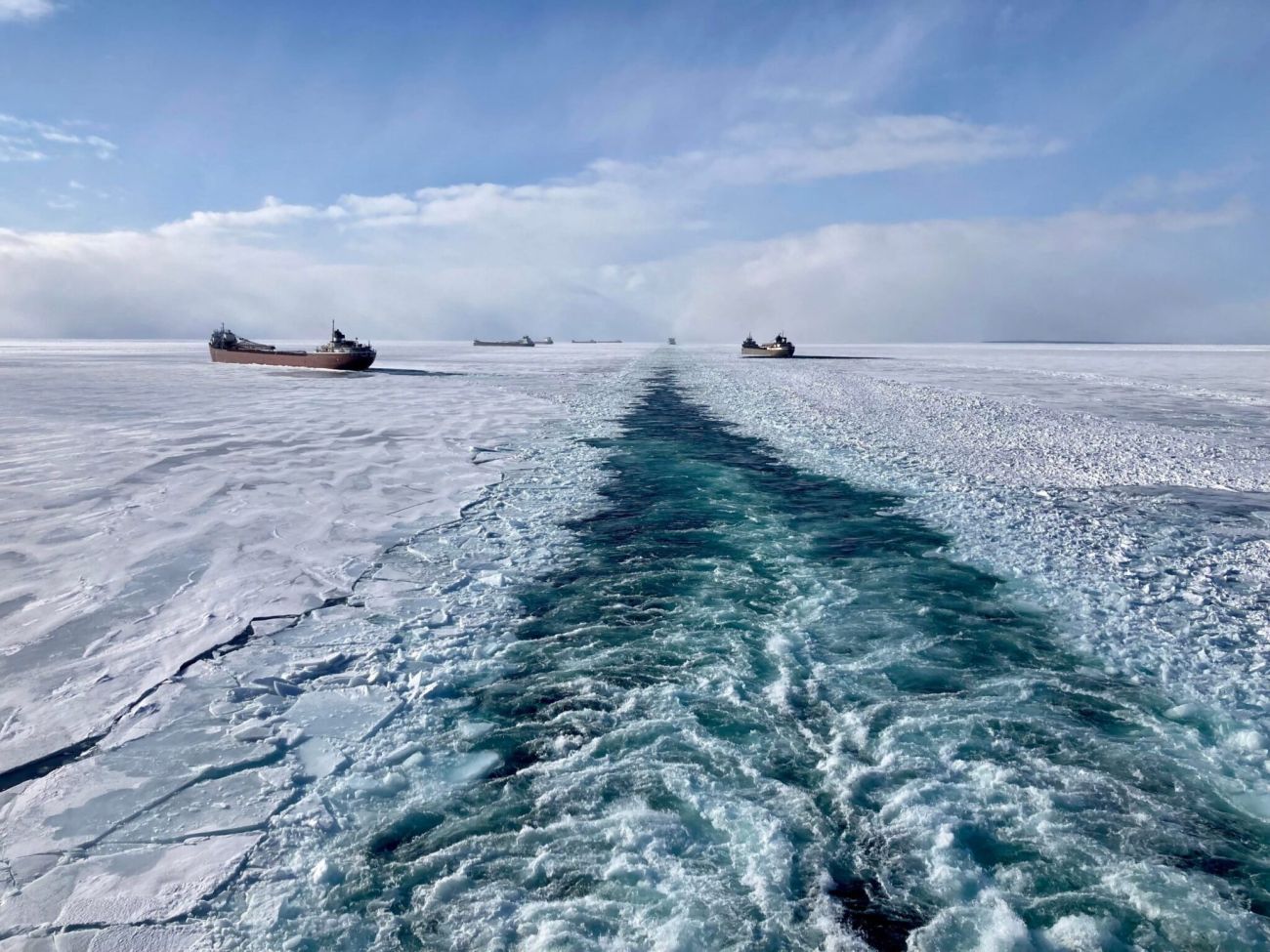Great Lakes shipping continues to decline

LANSING — Shipping on the Great Lakes and St. Lawrence Seaway is continuing its long-term downturn, and changes in the region’s steel industry are largely responsible for the trend, according to a recent Congressional Research Service report.
Iron ore, limestone and coal are the three leading commodities by tonnage shipped on the lakes. They’re followed by salt – mostly Canadian rock salt to deice roads – asphalt and slag left over from extracting iron from ore.
Iron ore for steelmaking accounted for 42 percent of Great Lakes tonnage in 2020, the report said.
Related:
- Michigan ‘river walker’ program warns anglers on eating contaminated fish
- Unlikely bond between luxury cruise line, Great Lakes climate scientists
- Harmful algal blooms appearing on Lake Erie earlier than usual
“Iron ore volumes show a steady decline, as steel is increasingly produced from scrap metal in mini-mills that are plentiful and scattered throughout the country,” according to the nonpartisan agency’s report. Scrap metal can easily be transported overland, so mini-mills don’t need to be near a waterway or iron ore mine.
The volume of asphalt, salt and gravel, slag iron and cement being shipped is holding steady, and sand and gravel volume is increasing, it said.
Most Great Lakes and St. Lawrence Seaway traffic is on foreign-flagged ocean-going saltwater vessels, freshwater vessels crewed and owned by American companies, and Canadian freshwater vessels.
The maximum size of Great Lakes ships is limited by the dimensions of the locks they must pass through.
The Welland Canal locks between lakes Erie and Ontario can’t accommodate vessels more than 740 feet long by 78 feet wide. The maximum for ships traveling through the Soo locks between lakes Huron and Superior is 1,200 feet long and 110 feet wide.
As for slowing or reversing the decline in shipping, “there are limits to what we can do to stimulate market demand,” said Jim Weakley, the president of the Lake Carriers ‘Association, which represents U.S.-flag vessel operators.
Even so, Weakley and the congressional report point to several positive developments, including more container shipping and construction of the first large U.S.-built self-propelled ship for use on the Great Lakes.
Weakley said U.S. and Canadian shipping companies have benefited from tariffs imposed on Chinese steel to combat that country’s dumping of its excess steel at prices below production costs.
The Army Corps of Engineers is constructing a new lock in Sault Ste. Marie. The agency said it completed the first phase of the project last August “under budget and ahead of schedule” and announced last month that it remains on schedule as major construction continues with phases 2 and 3 this season.
The Army Corps estimates that the 2nd phase will be done next summer and the 3rd phase will be finished in 2030.
Also, the Biden administration’s infrastructure funding law has boosted demand for limestone and cement used for constructure, he said.
But the switch by electric utility companies from coal to natural gas to renewable energy sources has slashed the volume of coal shipped on the Great Lakes.
“It’s hard to replace that many millions of tons of cargo with limestone or iron ore,” Weakley said.
Eric Peace, the association’s vice president, said, ship operators and companies that depend on shipping, such as steel mills and iron ore mines, have been hurt in recent years by the Coast Guard’s insufficient ice breaker capacity. Some of those ice breakers are more than 40 years old.
In 2020, ice in Whitefish Bay – a critical point between Duluth and the Upper Great Lakes at one end and the Lower Great Lakes at the other end – idled vessels for three days or longer because of a shortage of ice breakers, he said.
An association report by Peace estimated blamed inadequate icebreaking in 2019 for $1 billion in losses and more than 5,000 lost jobs.
And despite last winter’s comparatively mild weather, a quick freeze left nine vessels stuck for a several days after Christmas in the Toledo-Monroe area of western Lake Erie.
Congress has authorized $350 million to build a new ice breaker, but it’s expected to appropriate only $75 million of that amount for the upcoming fiscal year, he said.
“It’s a lengthy process,” Peace said, noting that it will likely take 10 years to finish the vessel, although “we are looking to have that expedited with additional funding.”
Meanwhile, Pure Michigan, the state’s tourism promotion unit, touts cruising as a way to “experience the Fresh Coast,” urging, “Experience unique ports of call in Michigan and surrounding states and provinces as you cruise through the Great Lakes and discover thriving cities, grand landscapes filled with indigenous wildlife, rolling dunes and miles of white sandy beaches.”
The Congressional Research Service report cited a “nascent cruise business” on the lakes with an estimated 170,000 passenger visits on 11 ships this year. However, American Queen Voyages announced in June that it will discontinue its Great Lakes cruises later this year for financial reasons and will sell two of its ships, the Ocean Voyager and Ocean Navigator.
Peace said American Queen Voyages, unlike other cruise companies, has left its Great Lakes vessels idle in the winter.
“Those guys were not going to leave the lakes and not have a winter (cruise) season (elsewhere). I don’t see the other operators slowing down,” Peace said. He noted that other operators move their ships for use in warmer climates during the winter.
This story was originally published by the Capital News Service
Business Watch
Covering the intersection of business and policy, and informing Michigan employers and workers on the long road back from coronavirus.
- About Business Watch
- Subscribe
- Share tips and questions with Bridge Business Editor Paula Gardner
Thanks to our Business Watch sponsors.
Support Bridge's nonprofit civic journalism. Donate today.
See what new members are saying about why they donated to Bridge Michigan:
- “In order for this information to be accurate and unbiased it must be underwritten by its readers, not by special interests.” - Larry S.
- “Not many other media sources report on the topics Bridge does.” - Susan B.
- “Your journalism is outstanding and rare these days.” - Mark S.
If you want to ensure the future of nonpartisan, nonprofit Michigan journalism, please become a member today. You, too, will be asked why you donated and maybe we'll feature your quote next time!




